20 Personal Development Plan Examples for Career Growth

Sorry, there were no results found for “”
Sorry, there were no results found for “”
Sorry, there were no results found for “”

Career growth is not linear—you strategize, tweak, and test your way there. That is where a Personal Development Plan (PDP) helps, turning vague ambitions into clear steps.
But most PDPs feel like corporate homework (dry, rigid, and destined to collect digital dust).
In this blog, we’ll share real-world personal development plan examples to help you level up, whether you’re chasing a promotion, switching industries, or refining your skills.
A Personal Development Plan is a structured approach to setting and achieving goals for personal and professional growth, involving self-reflection, goal-setting, and planning to enhance skills and achieve aspirations.
In other words, it is a playbook for professionals and employees who refuse to stagnate.
Some people drift through their careers, hoping experience alone will take them somewhere interesting. Others make a Personal Development Plan—not a wish list or corporate formality, but a deliberate strategy for leveling up.
A real PDP forces you to call your bluff:
📌 Example: Say you’re a Marketing Manager gunning for that Senior title in 12 months. Your PDP could look like this:
Because growth is engineered, and not a given.
Most people assume they’ll grow just by showing up and doing their job. But experience alone doesn’t make you better. Deliberate action does.
A PDP ensures that you move forward with purpose. Here’s how:
🧠 Did You Know: The concept of personal development dates back to ancient philosophers. Socrates famously said once, “The unexamined life is not worth living,” spotlighting the value of personal introspection long before it became a popular trend.
Setting professional development goals is easy, but setting high-impact targets that create real career momentum is what makes the difference.
Here are 20 employee development plan examples that go beyond generic advice. Check what your company’s employee training plan templates cover, then fill in the gaps yourself.
Not just “get better” at something; own it. Whether it’s communication skills or data analysis expertise, be the go-to person in that area. Use career map templates to track your progress. 🎯
💡 Pro Tip: Reverse-engineer job descriptions of roles you want and focus on the skills mentioned the most.
Speak with purpose and challenge weak ideas in every meeting. Practice active listening. People remember someone who shifts the conversation in a valuable direction, not who just nods along. 💬
💡 Pro Tip: Prepare a ‘power point’—one solid idea that adds a unique perspective
Negotiation, persuasion, and storytelling aren’t limited to salespeople. Whether you’re pitching a project or your own promotion, learning to market yourself well is like a sales job. sales job. 💰
💡 Pro Tips: Challenge yourself to hear “no” more often (apply for stretch roles, pitch bold ideas)
A strong personal brand transcends online posts—it’s about being known for something. What do people associate with your name? If you don’t define it, someone else will. 🌟
💡 Pro Tip: Share insights on industry trends (even in small ways, like internal Slack posts)
Indecision kills momentum. Learn frameworks like second-order thinking and opportunity cost analysis to make faster, smarter calls. ⚡
💡 Pro Tip: Set a ‘90% confidence’ rule: If you’re 90% sure, decide and move forward
The fastest way to cement knowledge? Share it. Write, mentor, or present your insights. If you can’t explain it simply, maybe you still have to learn more about it. 🎓
💡 Pro Tip: Share lessons learned from real projects through LinkedIn updates or casual mentoring
The perfect plan means little without execution. Stop overanalyzing—start shipping, testing, and iterating. Speed is a competitive advantage. 🏃
💡 Pro Tip: Follow the two-minute rule; if it takes less than two minutes, do it now
Great leaders make time for people. Send one quick check-in message daily, recognize wins, or help in conflict resolutions. You can take the help of team development plan templates. ⏳
💡 Pro Tip: Use people’s names often; it creates an instant connection and trust.
Most people give or take feedback poorly. Sharpen your emotional intelligence to deliver it clearly, receive it without ego, and use it to fuel real growth. 🗣️
💡 Pro Tip: Pair criticism with a solution; it makes feedback constructive, not personal.
Deep work is rare. Set distraction-free sprints (90-minute blocks), turn off notifications, and actually finish what you start. 🧠
💡 Pro Tip: Do a ‘distraction audit’: Track what interrupts your focus daily and control the biggest culprits.
Clear writing = clear thinking. Whether it’s emails, reports, or LinkedIn posts, if you can’t write concisely and persuasively, you’re limiting your career. ✍️
💡 Pro Tip: Write how you talk—but sharper. Ditch the fluff, and skip the jargon.
Not all tasks are created equal. Prioritize work that builds long-term leverage—projects that expand your skills, network, or visibility. 📈
💡 Pro Tip: Seek high-visibility work that puts you in front of key decision-makers.
Most people reach out only when they need help. Flip the script—offer value first. Share insights, compliment people’s work, and stay top of mind as part of your long-term goal planning. 🤝
💡 Pro Tip: Make one valuable connection weekly—comment on posts or send thoughtful messages.
Productivity centers on having the energy to do what matters. Optimize your sleep, physical health, and mindset for a healthy work-life balance. Learn stress management techniques. 💫
💡 Pro Tip: Take brain breaks—10 minutes of sunlight or movement boosts energy
Creativity is a habit. Write down 10 new ideas daily: solutions, innovations, experiments. Train your brain to spot opportunities everywhere. ✨
💡 Pro Tip: Challenge yourself to generate five solutions before settling on one.
The smartest people don’t have all the answers—they ask the best questions. Learn to dig deeper, challenge assumptions, and uncover insights others miss. ❓
💡 Pro Tip: Don’t ask yes/no questions; ask open-ended questions that spark conversations
Confidence isn’t limited to what you say; it’s also how you say it. Master your tone, body language, and clarity to naturally command attention in any room. 👔
💡 Pro Tip: Lead with the key point, then add details (busy people don’t wait for you to get to the point)
Every “yes” is a trade-off. Protect your time and energy by setting boundaries, declining distractions, and prioritizing what truly matters. 🛑
💡 Pro Tip: Practice saying “No” in small situations to build this habit.
Stop waiting for the perfect role, project, or promotion—build it. Pitch new ideas, start side projects, and position yourself as the obvious choice for new opportunities. 🔑
💡 Pro Tip: Start a side project aligned with your career goals (for example, launch a blog or create a course) about your profession or hobby.
Complacency is career quicksand. Read books, take courses, and study people ahead of you. The fastest-growing professionals never stop being students. 📚
💡 Pro Tip: Commit to reading one book per month on a relevant topic. Start with Atomic Habits by James Clear.
To set your personal development goals, you need structure, clarity, and specific actions that align with your vision.
ClickUp, the everything app for work, makes it easy. Here’s a step-by-step guide to building a PDP that actually moves the needle.

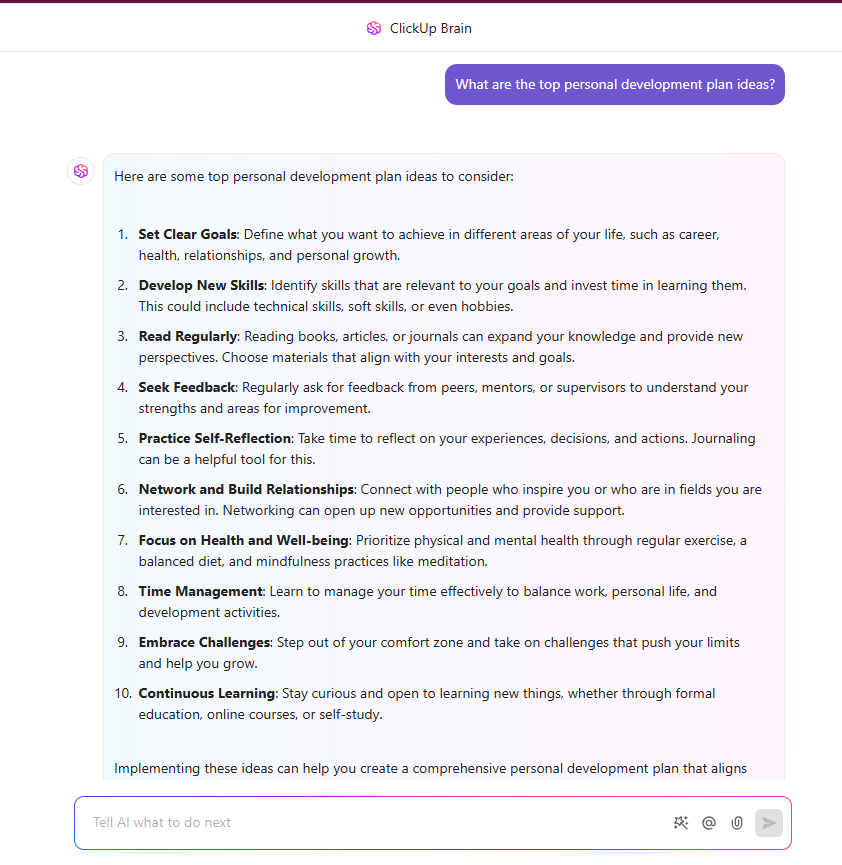
Each view lets you add details like Daily PD Time, Learning Goals, Development Resources, and Accountability Partner(s)—making your growth journey fun and efficient.

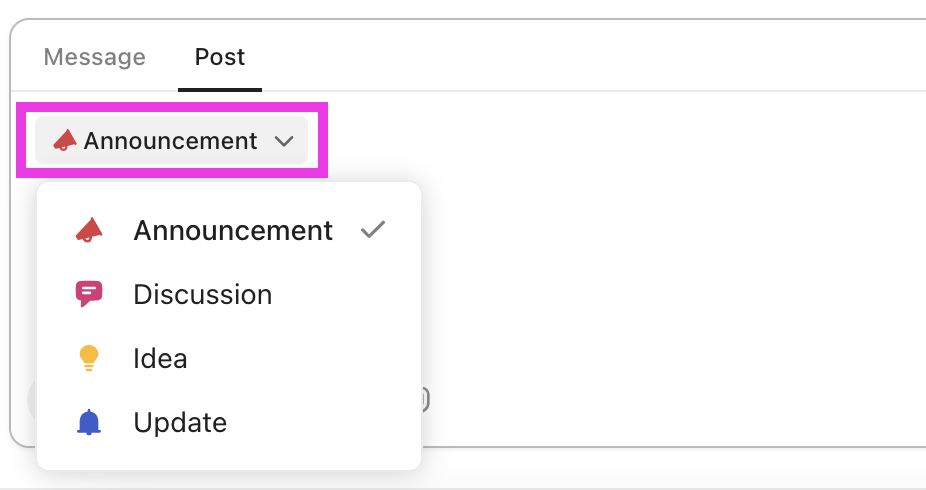
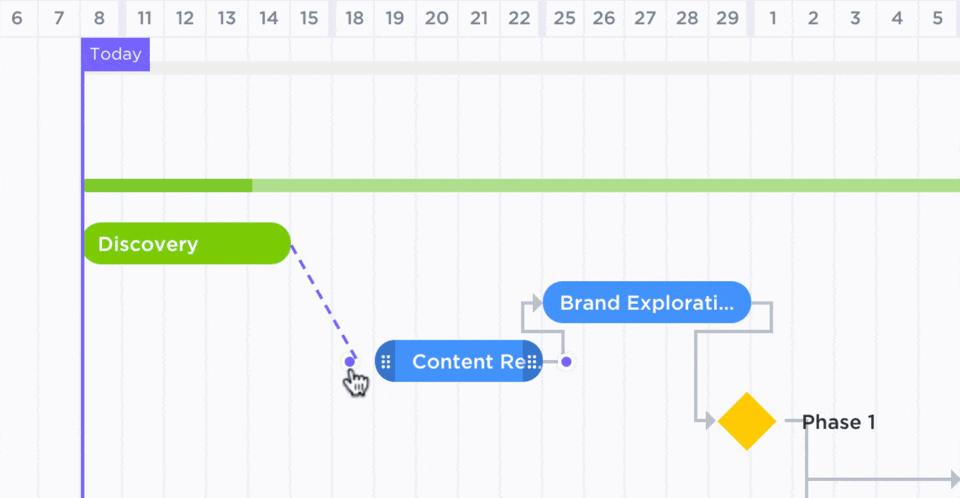
Use ClickUp Docs to create a central repository for all your resources. Link relevant articles, store notes from courses, and track contact information for mentors.

Need to dedicate time in a day to learning a new skill? Create a recurring task and block off the time on your ClickUp Calendar.

Step 6: Monitor progress and adapt
Use ClickUp Dashboards to visualize your progress. Create custom widgets to track task completion, goal achievement, and overall progress.
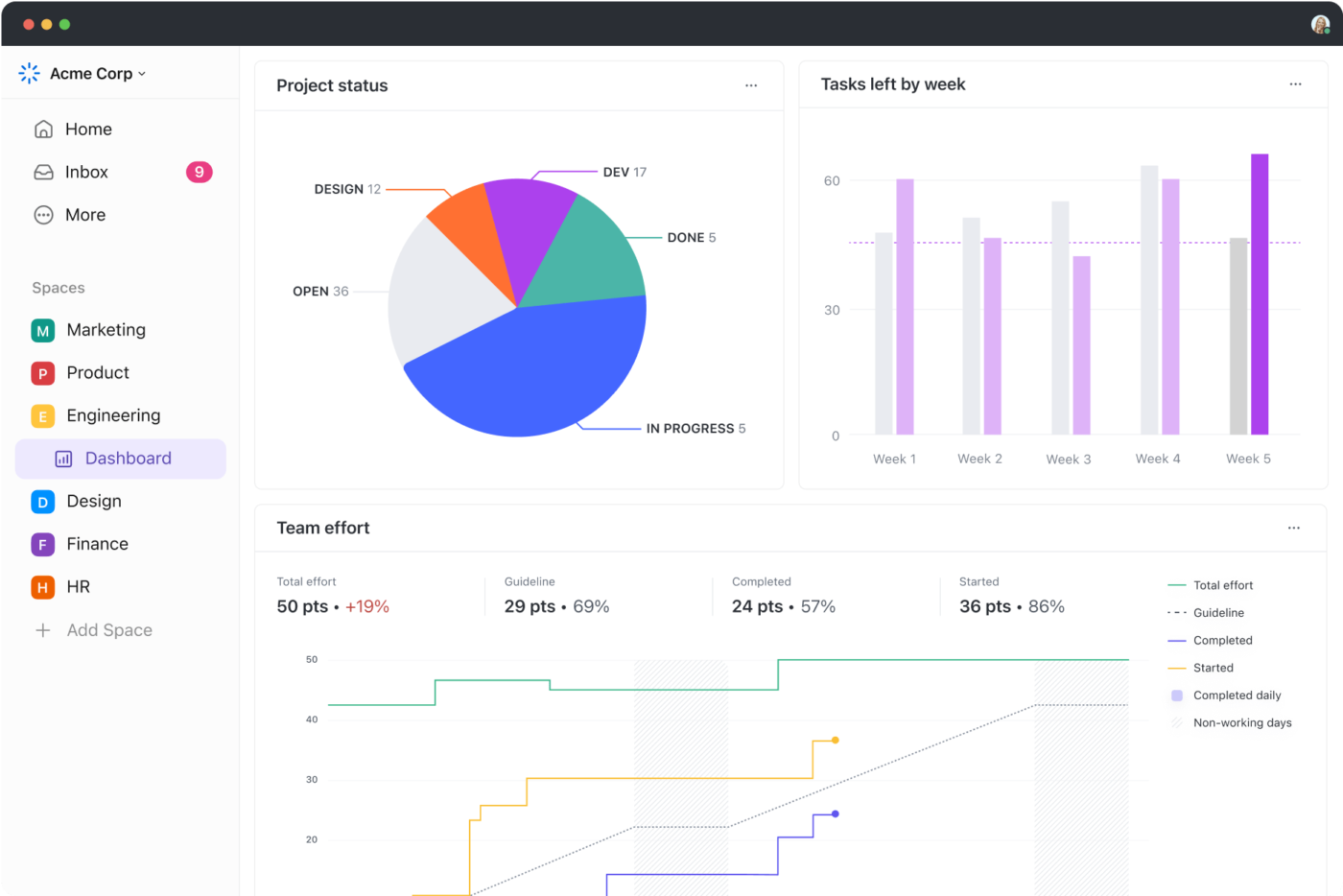
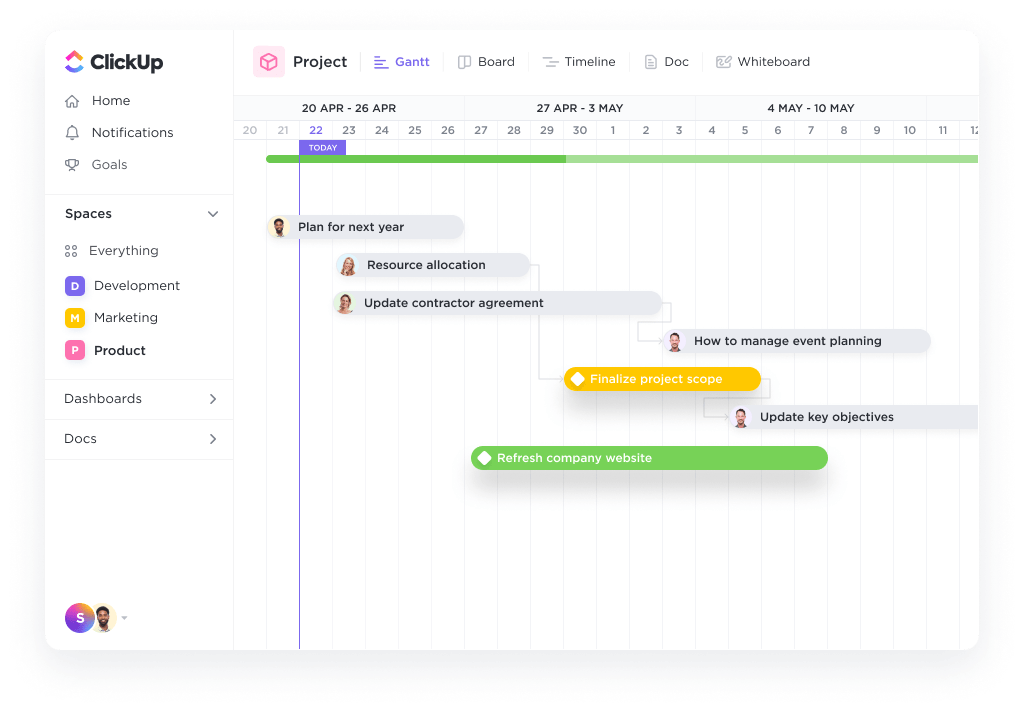
📮ClickUp Insight: 92% of knowledge workers use personalized time management strategies.
But, most workflow management tools don’t yet offer robust built-in time management or prioritization features, which can hinder effective prioritization. ClickUp’s AI-powered scheduling and time-tracking features can help you transform this guesswork into data-driven decisions.
It can even suggest optimal focus windows for tasks. Build a custom time management system that adapts to how you actually work!
Staying motivated in personal development can be exacting—here’s the list that’ll keep your momentum steady and complement your growth mindset:
Losing motivation in personal growth often comes down to a lack of clarity. ClickUp brings you closer to your dream career.
With ClickUp Goals, Dashboards, and AI insights, you always know where you stand. ClickUp Automations eliminates manual work, and integrations keep learning resources, calendars, and notes in one place.
Track skills, set milestones, and review progress—all in a structured, actionable way.
Sign up for ClickUp for free and build your self-sustaining personal development system.
© 2025 ClickUp